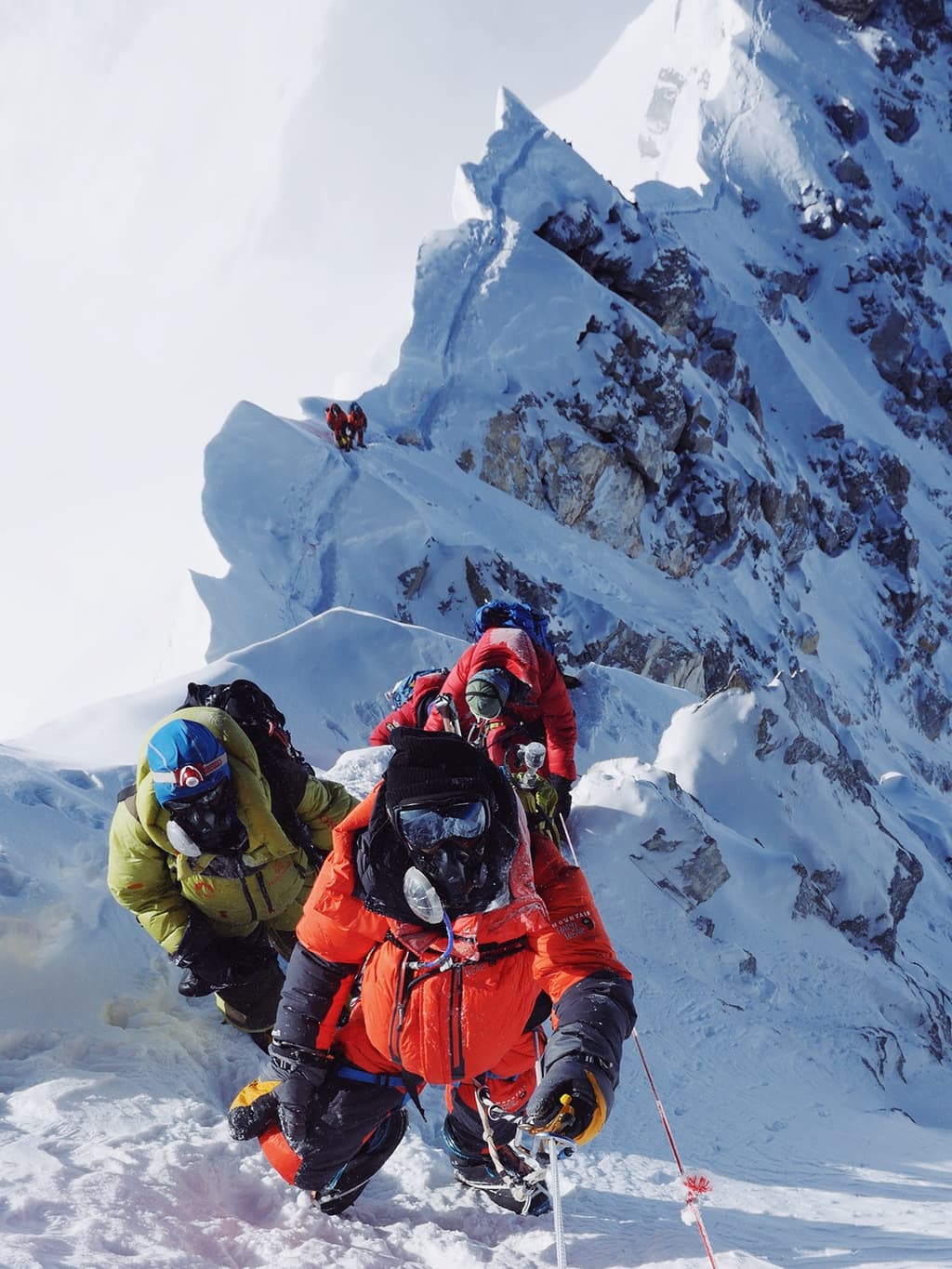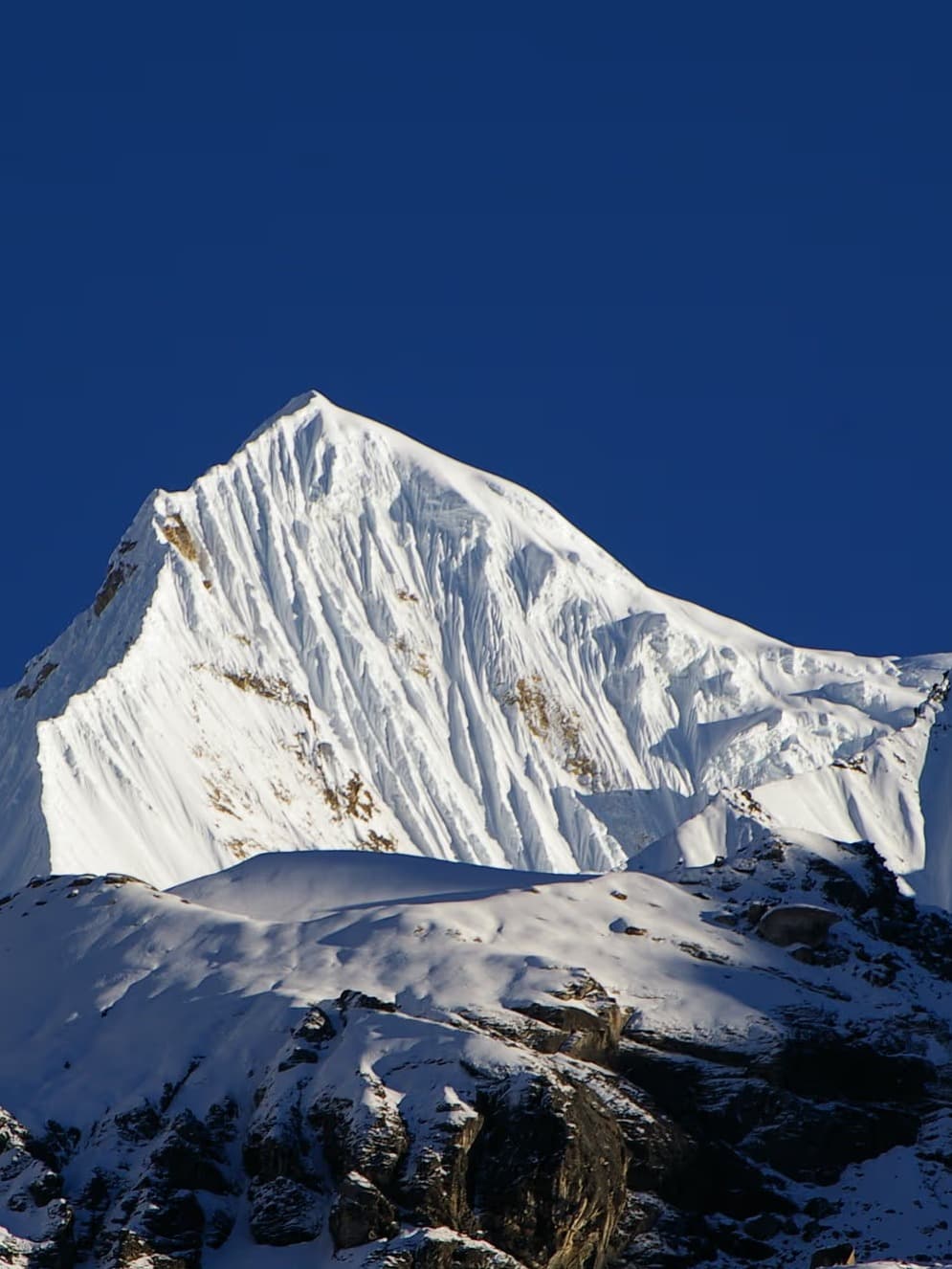Ever caught yourself daydreaming about conquering a Himalayan peak without the extreme crowds of Everest? That's where Pisang Peak comes in—a 6,091m adventure that's calling your name.
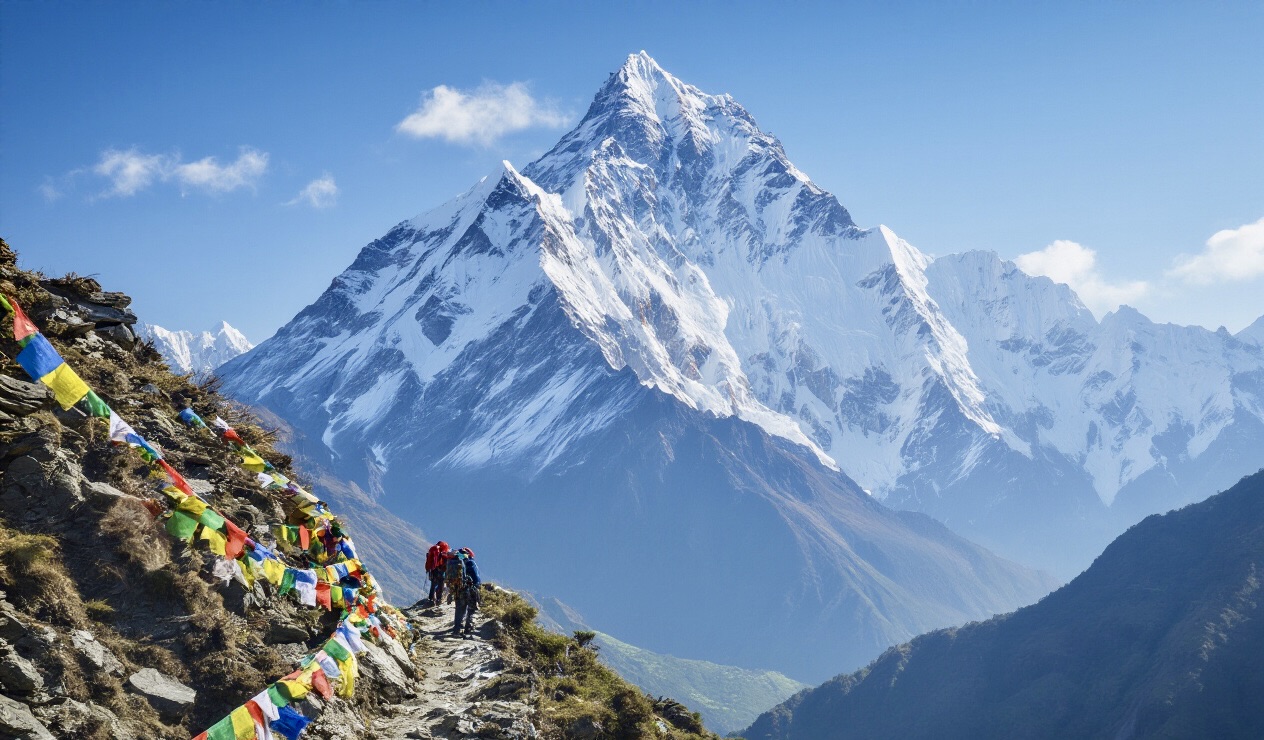
Standing majestically in Nepal's Annapurna region, Pisang Peak climbing offers that perfect blend of technical challenge and jaw-dropping scenery without emptying your bank account. The route takes you through charming villages, across diverse landscapes, and ultimately to views that make every step worthwhile.
Think this is just another cookie-cutter mountain expedition? Think again. With costs ranging from $1,600 to $2,500 depending on your package, this is premium adventure at a fraction of what you'd pay for more commercial peaks.
But here's what most climbers don't realize until they're halfway up the mountain...
Overview of Pisang Peak
Location and geographical features
Nestled in the Annapurna region of Nepal, Pisang Peak stands tall at 6,091 meters (19,983 feet). We've been organizing expeditions to this magnificent mountain for years, and its location never fails to impress our clients. The peak rises above the village of Pisang in the Manang district, offering breathtaking views of the Annapurna range.
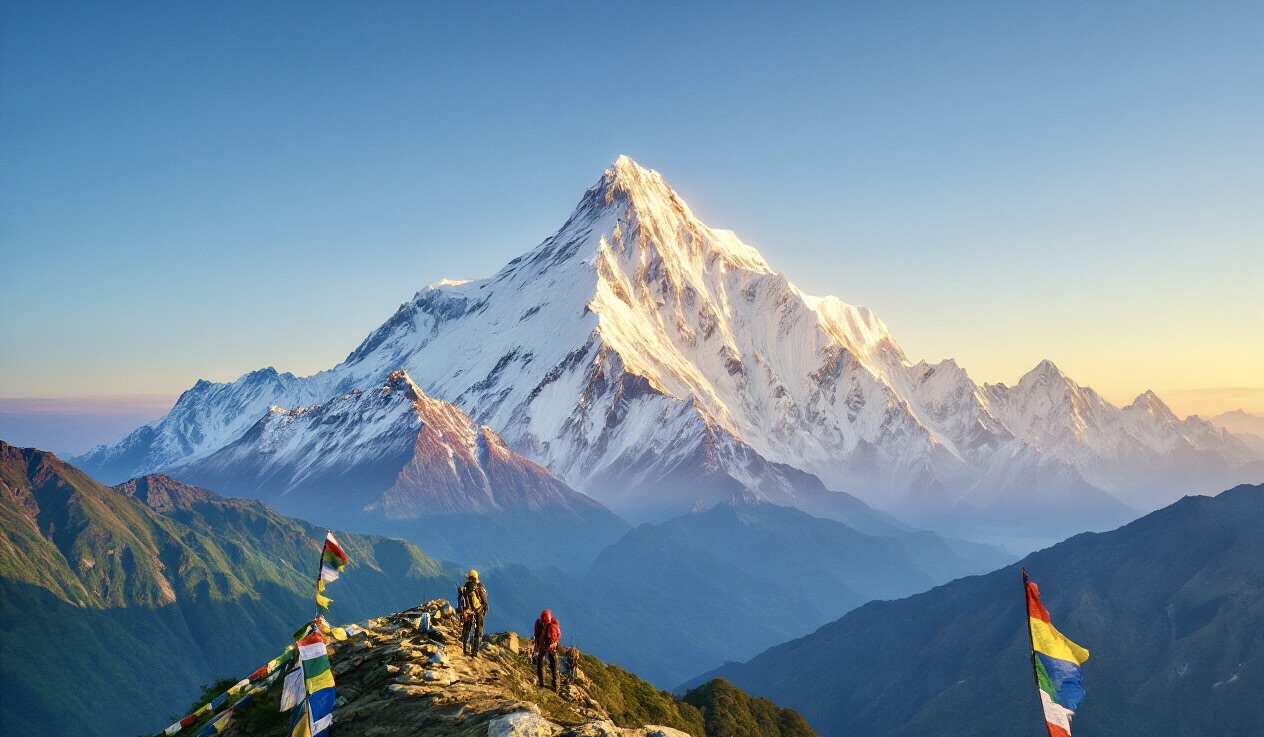
What makes Pisang Peak special is its position along the famous Annapurna Circuit trek. We often tell our climbers that this strategic location gives them the perfect opportunity to combine trekking and climbing in one incredible adventure. The mountain sits on the northern side of the Marshyangdi Valley, surrounded by stunning landscapes that range from lush forests to barren high-altitude terrain.
The approach to Pisang Peak takes you through diverse ecosystems and traditional Nepali villages, where you'll experience authentic mountain culture firsthand. We've guided countless climbers through this region, watching their faces light up as the magnificent peak comes into view for the first time.
Height and climbing difficulty level
At 6,091 meters, Pisang Peak presents a serious but achievable challenge. We classify it as a technical trekking peak – perfect for adventurers looking to step up from high-altitude trekking to mountaineering.
The climb involves traversing steep snow and ice slopes, with gradients sometimes exceeding 45 degrees. Our experienced guides always emphasize that climbers should have basic mountaineering skills, including the use of ice axes, crampons, and ropes. The final summit push requires technical climbing, making it more demanding than you might expect from its modest height.
For comparison with nearby peaks:
|
Peak |
Height |
Difficulty Level |
|
Pisang Peak |
6,091m |
Moderate to Challenging |
|
Island Peak |
6,189m |
Moderate |
|
Mera Peak |
6,476m |
Moderate |
|
Thorong Peak |
6,144m |
Challenging |
Best seasons for climbing
Timing is everything when it comes to conquering Pisang Peak. We've found two distinct windows that offer the best climbing conditions.
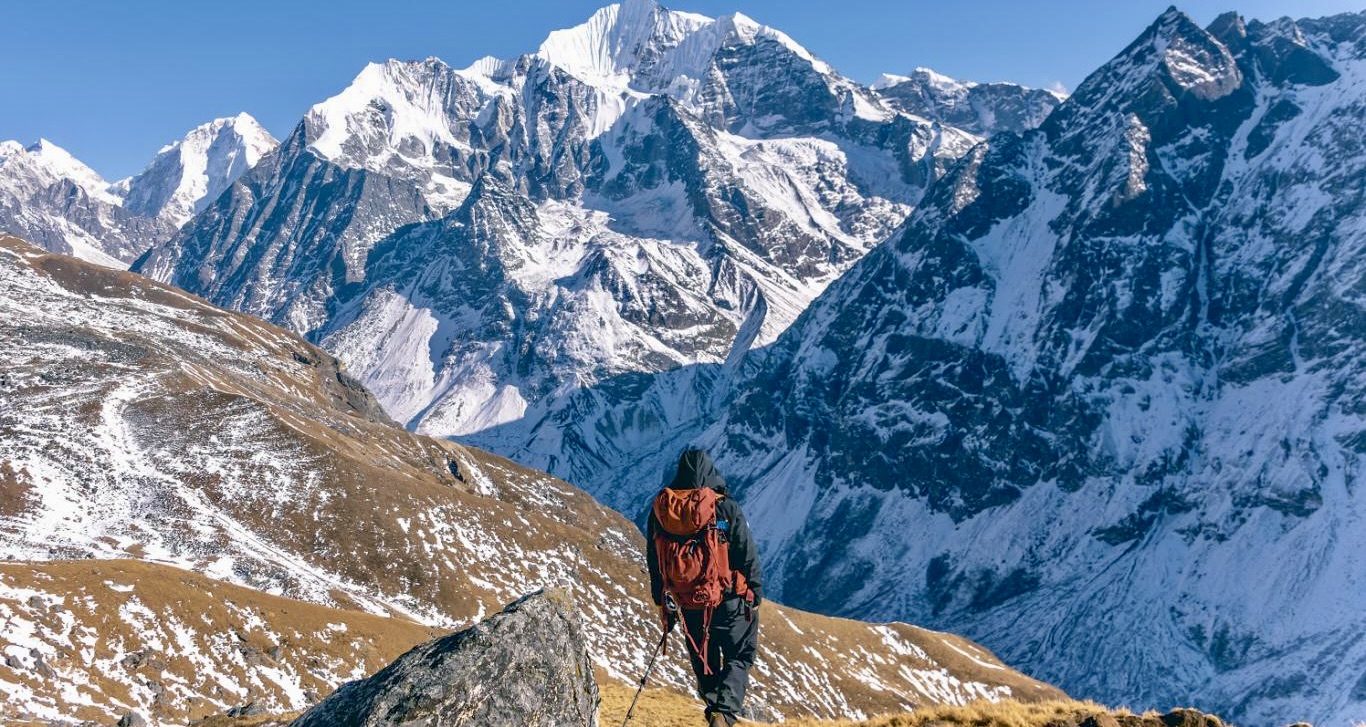
The pre-monsoon season (April to early June) brings stable weather patterns with clear mornings and occasional afternoon clouds. During these months, we enjoy warmer temperatures and spectacular rhododendron blooms at lower elevations. The snow conditions are typically ideal for climbing, with firm snow pack that makes for secure footing.
The post-monsoon period (late September to November) is our personal favorite. The skies are crystal clear, offering unparalleled mountain views. The air feels crisp and clean after the monsoon rains, and the stable weather patterns mean fewer surprises during your climb.
We strongly advise against attempting Pisang Peak during the monsoon (June-September) due to heavy rainfall, poor visibility, and increased avalanche risk. Winter climbs (December-February) are possible but extremely challenging due to severe cold and heavy snowfall.
Complete Cost Breakdown
Permit fees and paperwork expenses
The climbing permit for Pisang Peak isn't cheap, but it's definitely more affordable than those big-name mountains. We charge $350 for the NMA (Nepal Mountaineering Association) climbing permit during spring and autumn seasons. Winter and summer climbers get a slight discount at $300.
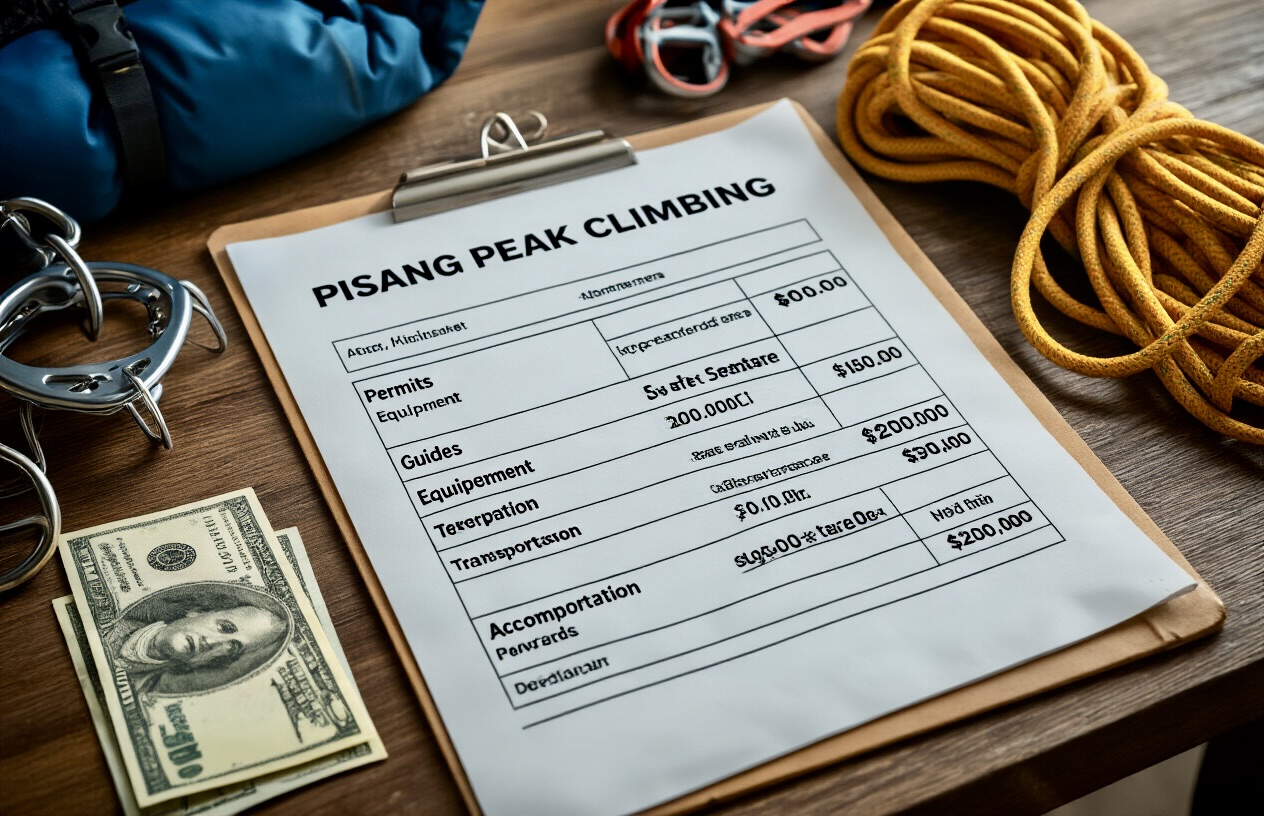
You'll also need the ACAP (Annapurna Conservation Area Permit), which costs $30 per person and the TIMS (Tourist Information Management System) car
Detailed Day-by-Day Itinerary
Arrival and preparation in Kathmandu
We welcome you to the vibrant city of Kathmandu! On day 1, our team will pick you up from Tribhuvan International Airport and transfer you to your hotel. After settling in, we'll host a brief orientation meeting where you'll meet your climbing guide and fellow climbers.
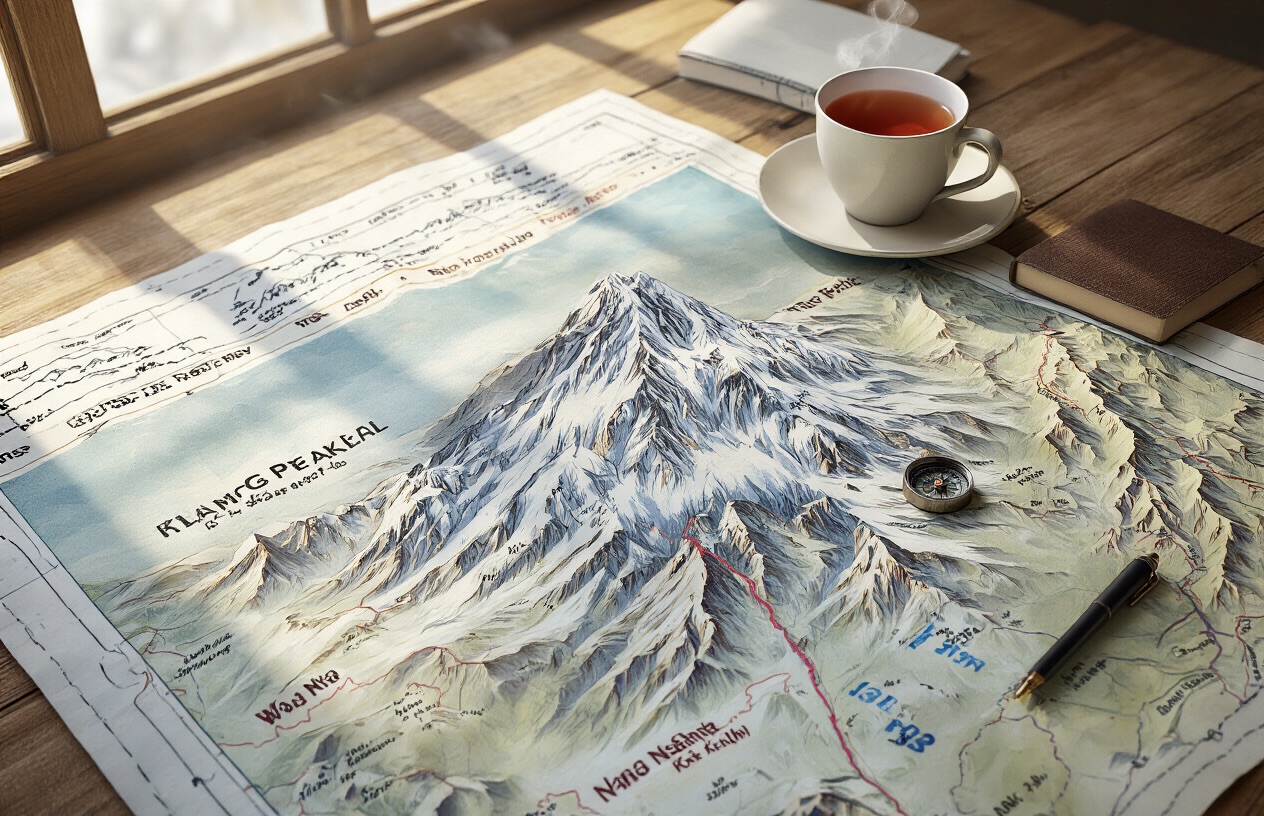
Day 2 is dedicated to preparation and acclimatization. We'll help you with gear checks, making sure you have all the necessary equipment for the climb. This is also when we handle all the paperwork and permits required for Pisang Peak. In the afternoon, we take you on a cultural tour of Kathmandu's UNESCO World Heritage sites, including Pashupatinath Temple and Boudhanath Stupa.
Journey to base camp
Our adventure begins on day 3 with a scenic drive from Kathmandu to Besisahar (760m), taking approximately 6-7 hours. We spend the night here before continuing our journey.
On day 4, we drive to Chame (2,670m) via jeep, enjoying spectacular mountain views along the way. The following day, we trek to Pisang village (3,200m), a moderate 5-6 hour hike through pine forests and traditional settlements.
Day 6 sees us reaching Pisang Peak Base Camp (4,380m) after a challenging but rewarding 4-5 hour climb. The views of Annapurna II and IV become increasingly breathtaking as we gain altitude.
Acclimatization days schedule
Proper acclimatization is crucial for a successful summit attempt. Day 7 is our first acclimatization day at base camp. We take short hikes to higher elevations and return to base camp to sleep, following the "climb high, sleep low" principle.

On day 8, we climb to High Camp (5,400m), where we set up our tents for the summit push. Day 9 is another essential acclimatization day at High Camp. We practice using climbing equipment, review summit day procedures, and rest to conserve energy.
Summit day plan
Summit day begins incredibly early – around 1 AM on day 10. Starting in darkness is necessary to reach the summit before afternoon clouds roll in. We navigate the technical sections using fixed ropes, crampons, and ice axes.
The final push to the summit (6,091m) typically takes 5-7 hours. At the top, we're rewarded with unparalleled 360-degree views of the Annapurna range, Manaslu, and countless other Himalayan peaks. After celebrating our achievement (and taking plenty of photos!), we begin our descent back to High Camp.
Descent and return journey
After the summit, we descend to Pisang village on day 11, a much faster journey downhill. Day 12 takes us from Pisang to Chame, and on day 13, we drive back to Besisahar.
Day 14 marks our return to Kathmandu, where a hot shower and a comfortable bed await. We celebrate our successful climb with a farewell dinner featuring traditional Nepali cuisine and cultural performances.
On day 15, we transfer you to the airport for your departure flight, sending you home with unforgettable memories and perhaps plans for your next Himalayan adventure with us!
Essential Gear and Equipment
Technical climbing equipment needed
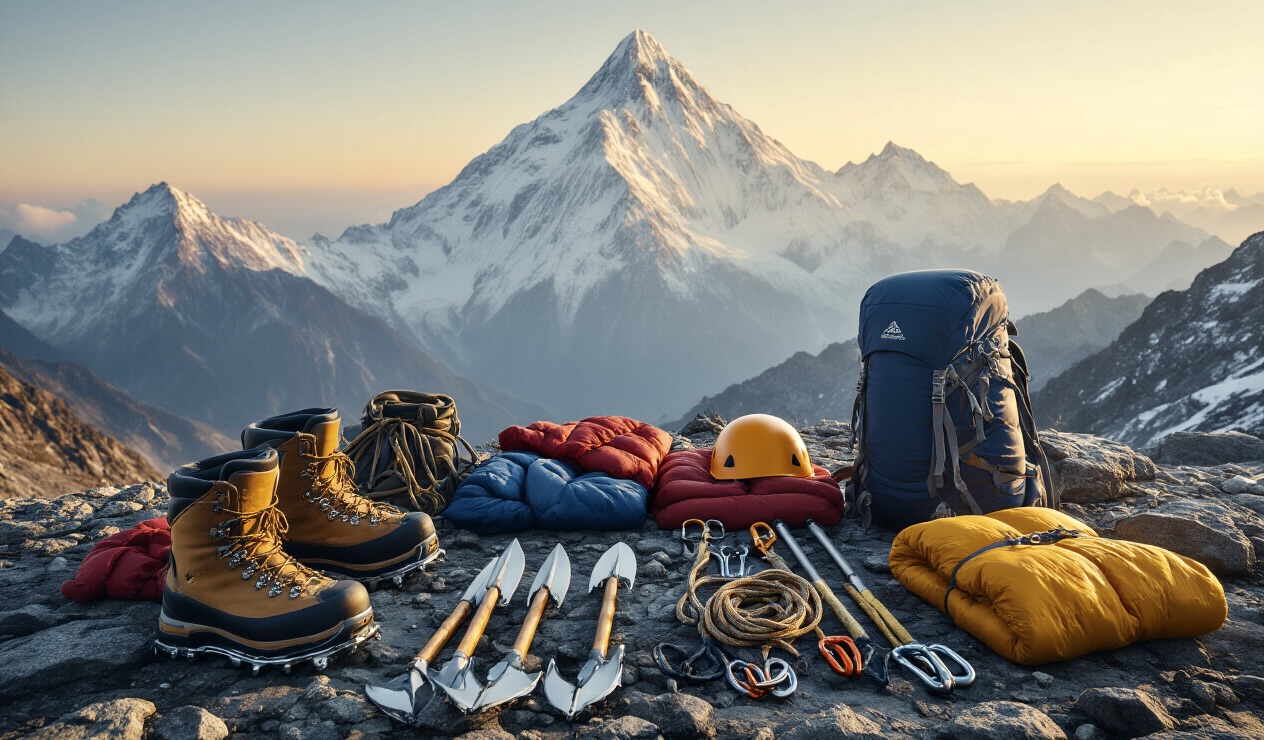
We've guided countless climbers up Pisang Peak, and trust us, having the right gear makes all the difference. For this challenging climb, you'll need:
- Ice axe: A must-have for navigating the icy sections
- Crampons: Get sturdy ones that fit your boots perfectly
- Climbing harness: Comfort is key since you'll wear it for hours
- Carabiners: Bring at least 4-5 (both locking and non-locking)
- Descender/belay device: ATC or figure 8 works great
- Climbing helmet: Don't skimp on head protection
- Prusik cords: Essential for emergency situations
- Climbing rope: We provide this, but know you'll be using a 50m dynamic rope
- Jumar/ascender: Makes upward progress much easier
Our team always checks your gear before the climb. Many clients who show up with improper equipment end up renting from us in Kathmandu, so double-check everything!
Clothing recommendations
The secret to comfort on Pisang Peak? Layers, layers, layers. Mountain weather changes fast, and you'll go from sweating to freezing in minutes.
Base layers:
- Moisture-wicking thermal tops and bottoms (2 sets)
- Quick-dry underwear and socks (several pairs)
Mid layers:
- Fleece jacket or pullover
- Softshell pants
- Insulated vest (optional but nice)
Outer layers:
- Waterproof and windproof jacket with hood
- Insulated down jacket (crucial for summit day)
- Waterproof pants
- Gaiters to keep snow out of your boots
For your extremities:
- Warm hat that covers ears
- Buff or neck gaiter
- Glove system: liner gloves + heavy mittens
- Mountaineering boots (must be crampon-compatible)
- Camp shoes for teahouses
Personal items checklist
We've seen too many climbers forget these essential personal items, only to regret it halfway up the mountain:
- Headlamp with extra batteries (critical for pre-dawn summit push)
- Sunglasses with UV protection (snow blindness is real, folks)
- Sunscreen (SPF 50+ minimum)
- Lip balm with sun protection
- Water bottles (2 liters capacity total)
- Thermos for summit day (keeps water from freezing)
- Personal first aid kit including blister treatment
- Medications (prescription + altitude sickness pills)
- Toiletries (biodegradable soap, toothbrush, toilet paper)
- Quick-dry towel
- Camera with extra batteries (cold drains them fast)
- Power bank for charging devices
- Trekking poles with snow baskets
- Sleeping bag rated for -20°C/-4°F
- Waterproof stuff sacks to keep everything dry
Remember, you'll be carrying some of this yourself, so be mindful of weight!
Physical Preparation for Pisang Peak
Required Fitness Level
Climbing Pisang Peak isn't a walk in the park. We recommend climbers have previous high-altitude trekking experience and basic mountaineering skills before attempting this challenge. You don't need to be an elite athlete, but a good baseline of cardiovascular endurance is essential.
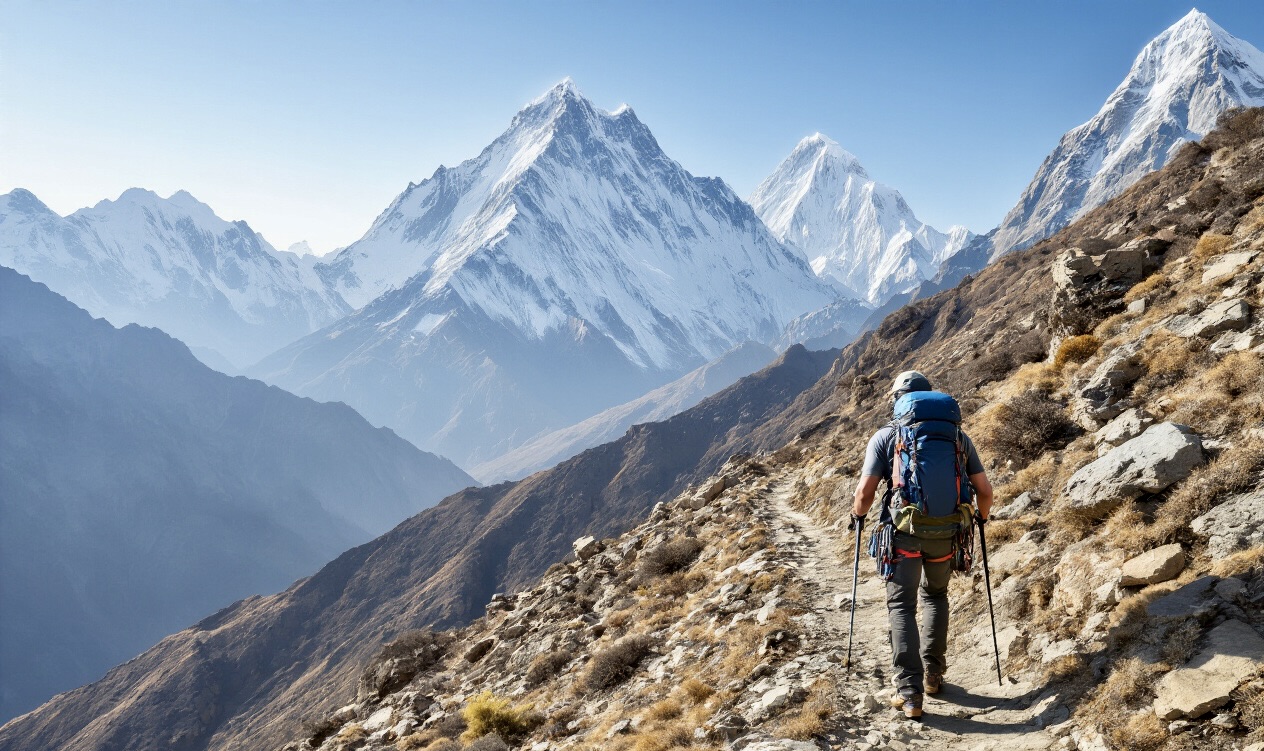
We've found that climbers who can comfortably hike 6-8 hours with a 15-20 pound pack, several days in a row, do best on this expedition. Upper body strength matters too, as you'll be using fixed ropes during the steeper sections near the summit.
Training Recommendations
Start your preparation at least 3-4 months before your climb. We suggest focusing on:
- Cardio training: Regular hiking with a loaded backpack is ideal. If you can't access hills, use a stair climber or treadmill on an incline for 1-2 hours, 3-4 times weekly.
- Strength work: Prioritize core stability and leg strength with squats, lunges and step-ups.
- Endurance building: Long weekend hikes (6+ hours) carrying the weight you'll have during the climb.
- Technical skills: Practice basic rope techniques if possible.
Gradually increase your training intensity as your departure date approaches. The fitter you are, the more you'll enjoy the experience.
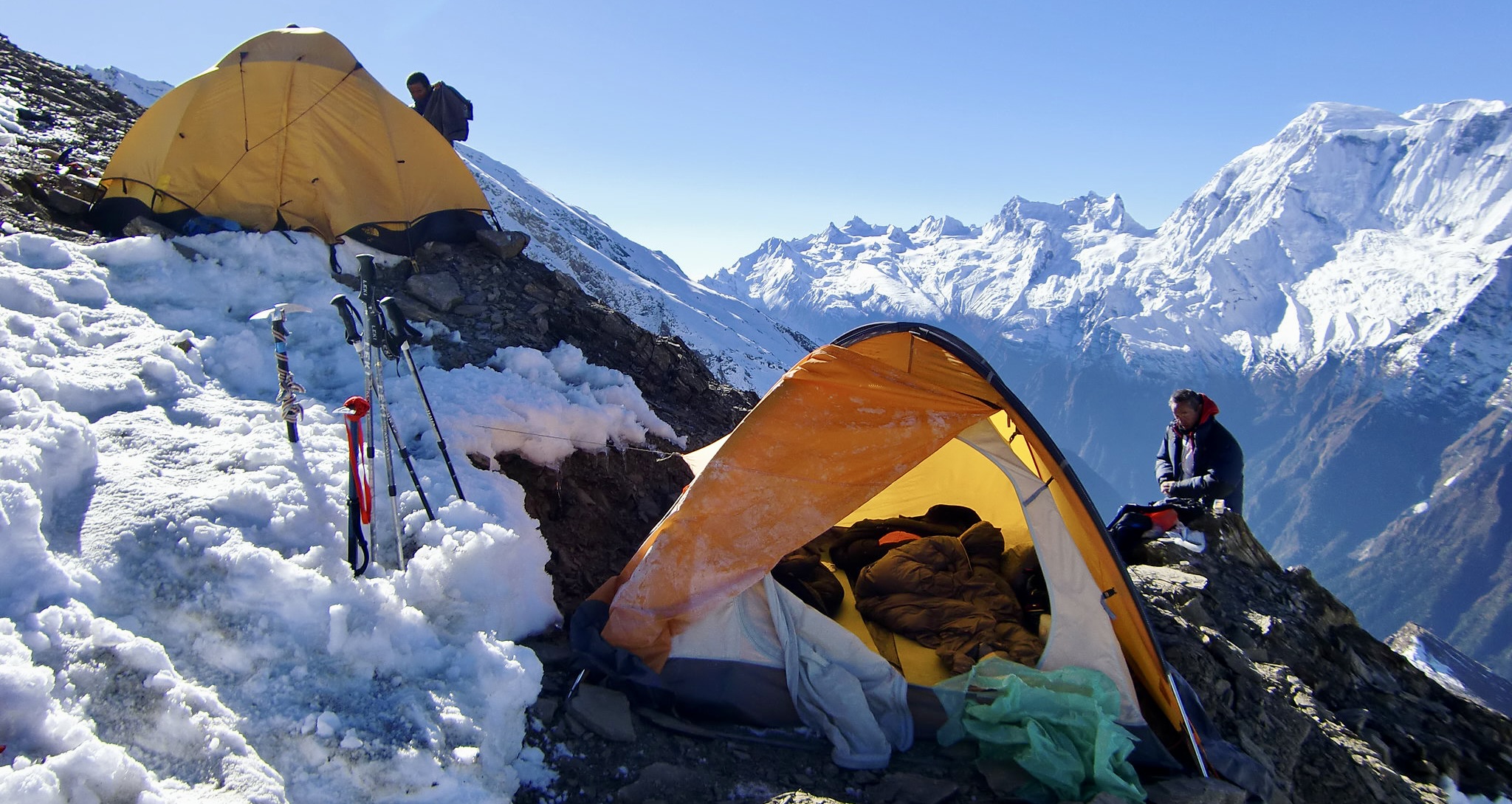
Altitude Sickness Prevention
We take altitude sickness very seriously. Our itinerary includes proper acclimatization days, but you should also:
- Stay hydrated – aim for 4-5 liters of water daily
- Climb high, sleep low when possible
- Move slowly – "pole pole" as they say in Nepal
- Consider preventative medication like Diamox (consult your doctor first)
- Listen to your body and inform our guides of any symptoms immediately
We've found that climbers who follow these guidelines dramatically reduce their risk of altitude-related problems. Remember, there's no shame in turning back if symptoms become severe – the mountains will always be there for another attempt.
Why Choose Everest Sherpa Expeditions
Experience and expertise
We've been guiding climbers up Pisang Peak for over 15 years. Our team consists of local Sherpa guides who grew up in these mountains. They don't just know the routes—they understand the mountain's moods, weather patterns, and hidden challenges that no guidebook can teach you.
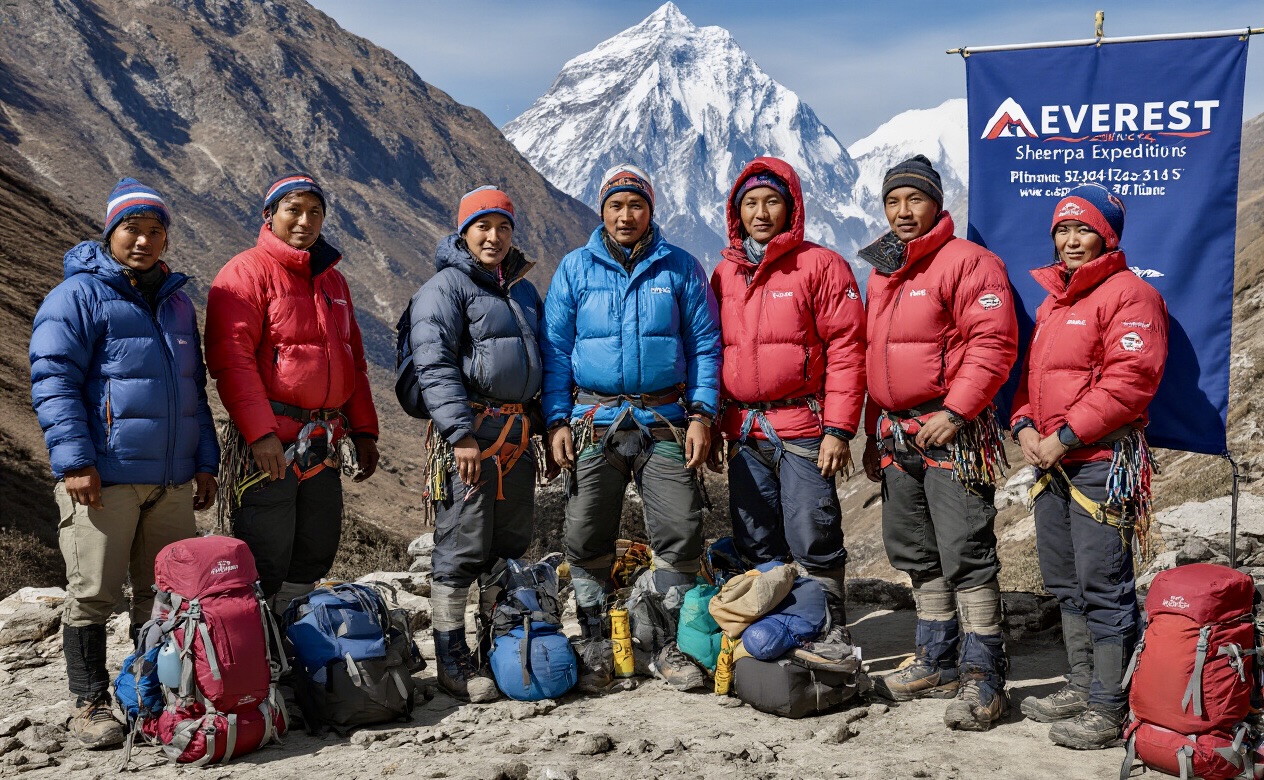
Our lead guides have summited Pisang Peak dozens of times and have extensive experience on bigger Himalayan giants, too. When you climb with us, you're climbing with people who call these mountains home.
Safety measures and protocols
Your safety isn't just a priority—it's our obsession. We maintain a strict 2:1 client-to-guide ratio on Pisang Peak to ensure personalized attention during critical sections of the climb.
Before each expedition, we conduct thorough equipment checks and provide training sessions on proper use of climbing gear, rope techniques, and high-altitude safety protocols.
We carry comprehensive medical kits, satellite phones, and emergency oxygen on all climbs. Our team members are certified in Wilderness First Aid and high-altitude emergency response.
Client testimonials and success rates
We're proud of our 89% summit success rate on Pisang Peak—well above the industry average of 65%.
"The Everest Sherpa team didn't just get me to the summit; they made sure I enjoyed every step of the journey." – Michael T., Canada
"Their knowledge of local conditions saved our climb when weather turned. They knew exactly when to push and when to wait." – Sarah K., UK
Additional services offered
We go beyond just getting you up and down the mountain. Our packages include:
- Custom acclimatization schedules based on your previous altitude experience
- Photography service to capture your summit moments
- Post-climb celebration dinner in Kathmandu
- Complimentary massage therapy session after your return
- Free storage of your city clothes and valuables while you're on the mountain
- Optional helicopter evacuation insurance
Booking Information
Reservation Process
Booking your Pisang Peak climbing adventure with us is straightforward and hassle-free. To reserve your spot, simply fill out the booking form on our website or reach out to our team via email. We'll need some basic information like your preferred dates, group size, and any special requirements you might have.
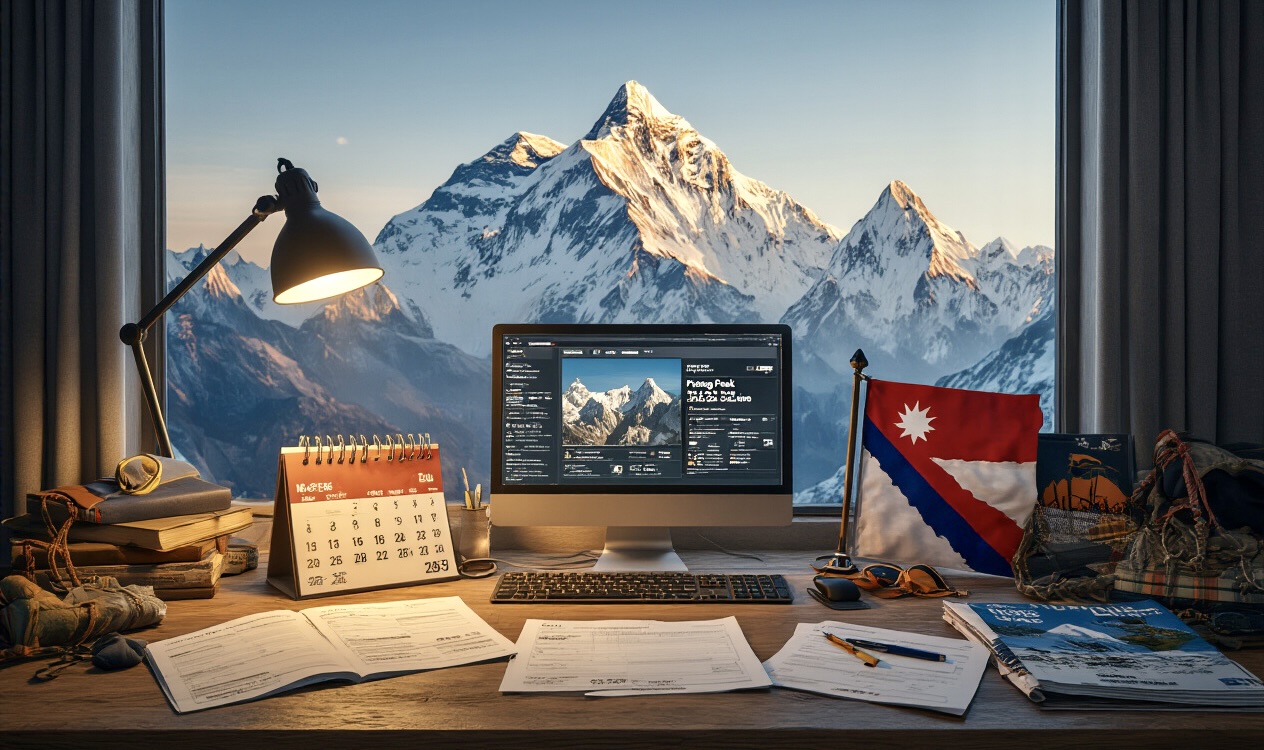
Once we receive your inquiry, our expedition experts will get back to you within 24 hours to discuss the details and answer any questions. We understand that planning a climbing expedition is a big decision, so we're here to guide you through every step of the process.
After confirming your trip details, we'll ask for a 20 - 30 % deposit to secure your reservation. The deposit ensures we can make all necessary arrangements for permits, accommodations, and guides well in advance.
Payment Options
We offer several convenient payment methods to make your booking process smooth:
- Credit/Debit Cards (Visa, MasterCard, American Express)
- Bank Transfer
- PayPal
- Western Union
For those booking from Nepal, we also accept cash payments at our Kathmandu office. All our payment gateways are secure and encrypted to ensure your financial information remains protected.
The remaining balance is due 30 days before your expedition begins. We'll send you a friendly reminder a week before the payment deadline.
Cancellation Policy
We understand that plans can change, which is why we've created a fair cancellation policy:
|
Cancellation Timing |
Refund |
|
60+ days before departure |
80% refund of deposit |
|
30-59 days before departure |
50% refund of deposit |
|
15-29 days before departure |
25% refund of deposit |
|
Less than 15 days before departure |
No refund |
In case of unforeseen circumstances like natural disasters or political unrest that might affect your trip, we offer the flexibility to postpone your climbing expedition to a later date at no additional cost.
We strongly recommend purchasing comprehensive travel insurance that covers trip cancellation, medical emergencies, and evacuation costs to protect your investment.
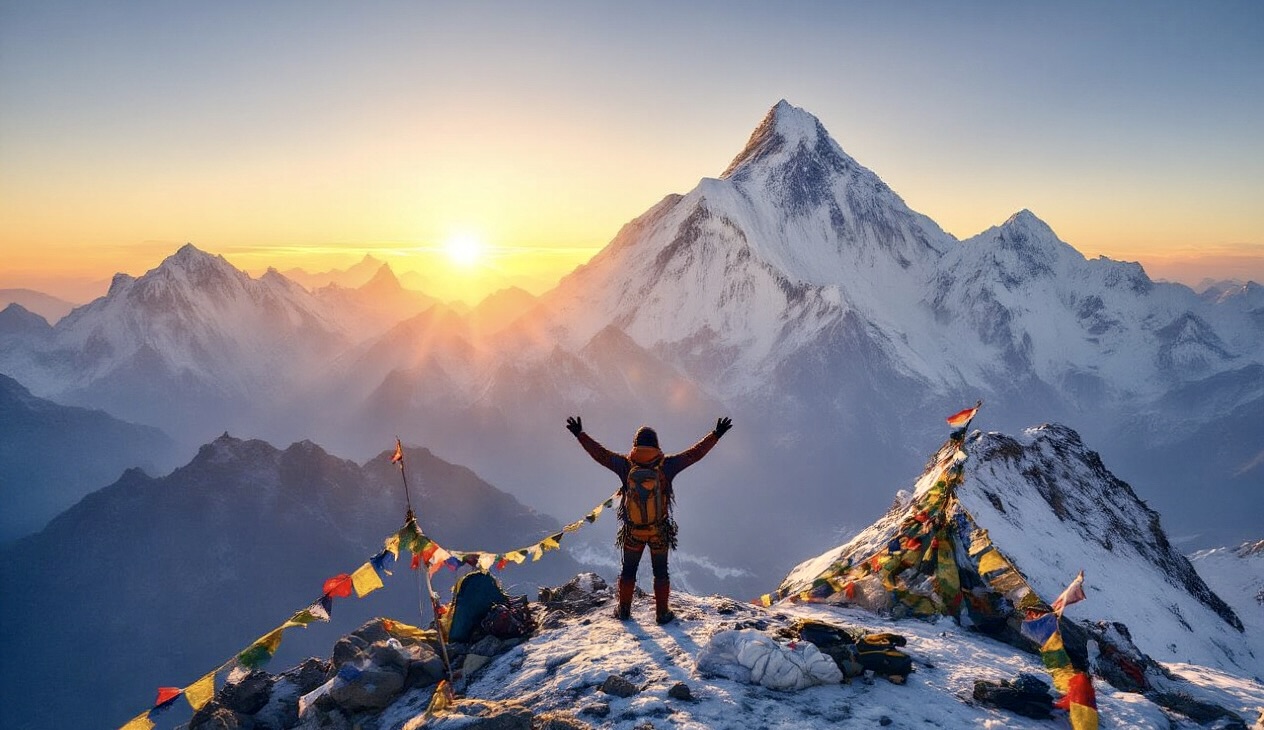
Embarking on the Pisang Peak climbing adventure offers an unparalleled experience in the Annapurna region, combining technical climbing challenges with breathtaking Himalayan scenery. As we've explored, this expedition requires careful planning, proper equipment, and adequate physical preparation to ensure a safe and successful summit. The detailed itinerary allows climbers to properly acclimatize while enjoying the cultural richness of the journey, and the comprehensive cost breakdown helps you plan your budget effectively.
Your Pisang Peak journey awaits with Everest Sherpa Expeditions, where our experienced guides and customizable packages ensure your climbing aspirations become reality. Whether you're an intermediate climber seeking your next challenge or an adventurous trekker looking to attempt your first peak, our team is committed to providing a safe, memorable experience in the magnificent Himalayas. Contact us today to book your expedition and take the first step toward conquering this magnificent 6,091-meter peak.
Start planning your adventure today and prepare to create memories that will last a lifetime.
If you need any further information, please contact us by email: [email protected], Phone: +977- 980 195 6248 (WhatsApp).

